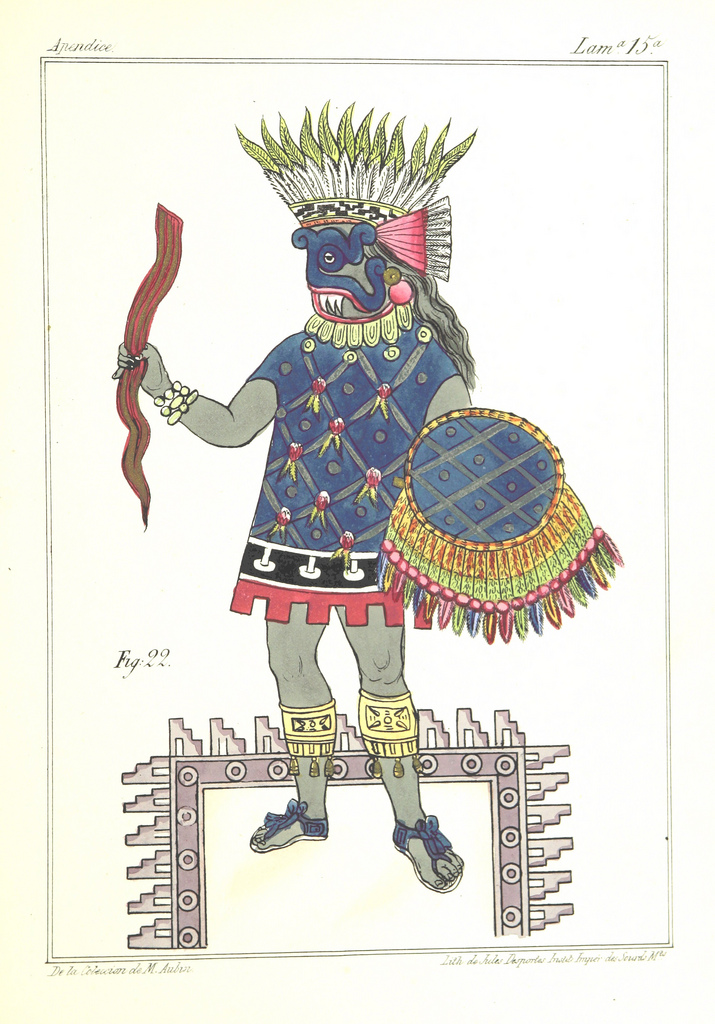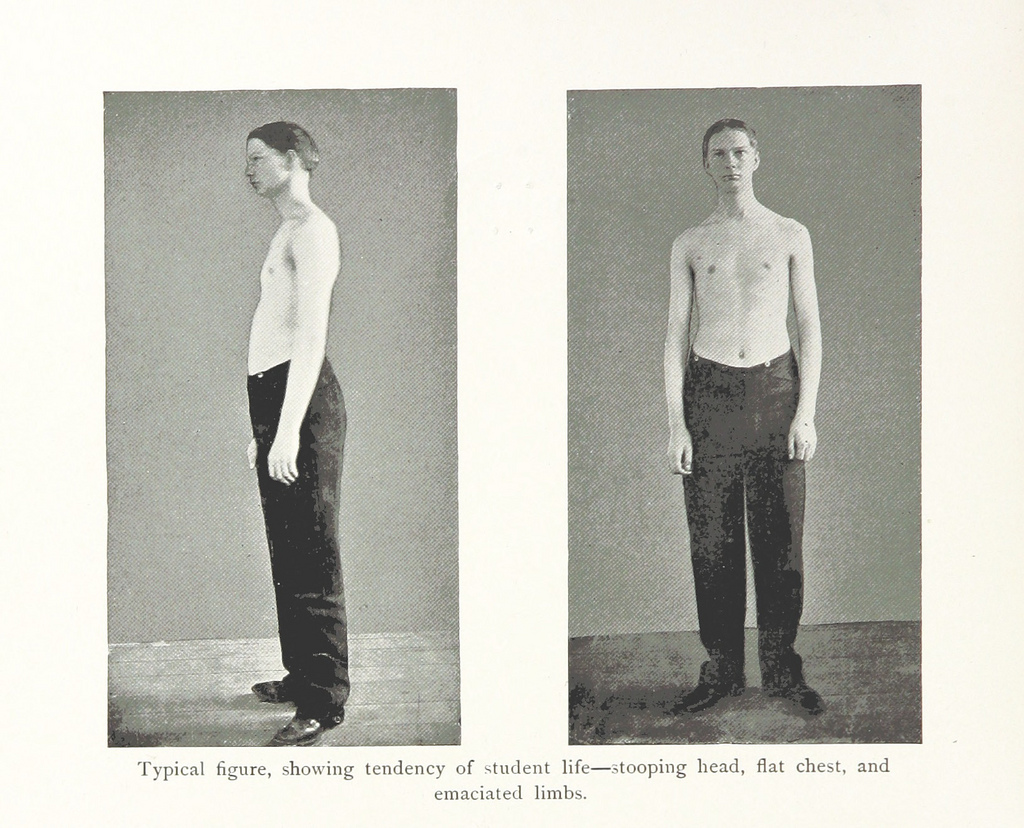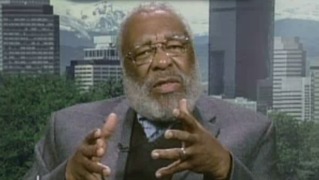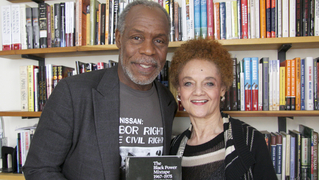Irish Slavery
by
James F. Cavanaugh
junglejim@btl.net
There are a great many K/Cavanaughs in North America who trace
their ancestry back to a Charles Cavanaugh, who arrived in Virginia,
with a brother or cousin named Philemon Cavanagh (Felim or Phelim), on
or about 1700. Their descendants most often spell their name with a C,
although a variety of both C and K spellings are found, even within the
same immediate family.
They were originally concentrated in the
Southeastern United States, particularly Virginia, North Carolina and
Georgia, but now spread to everywhere. Although long standing family
traditions trace Charles and Philemon of 1700 arrival back to Colonel
Charles Cavanaugh of Carrickduff and Clonmullen, (the son of Sir Morgan
Cavanagh, the son of Donnal Spanaigh Cavanagh), a recorded link still
evades researchers.
A possible link, however, was found in Barbados, where the birth
of a Charles Cavanaugh, son of Charles Cavanaugh, was registered there
in January 1679. At the same time, another Cavanagh was registered as
inbound on a ship to Barbados from Liverpool. And further complicating
the entry is the same registry records the death of a Charles Cavanaugh,
son of Charles at the same time. So the questions: was the dead Charles
the new born baby; or perhaps the father of the baby; or maybe the
inbound Cavanagh who may have died on the trip to Barbados, with his
death recorded upon arrival; or another Charles; or�.?
These questions are still unanswered, but a more intriguing
question is what were the Cavanaughs doing in Barbados in the first
place? The answer takes us down a revolting path wandering through one
of the most insensitive and savage episodes in history, where the greed
and avarice of the English monarchy systematically planned the genocide
of the Irish, for commercial profit, and executed a continuing campaign
to destroy all traces of Irish social, cultural and religious being. As
the topic was politically sensitive, little has been written about this
attempted genocide of the Irish, and what has been written has been
camouflaged because it is an ugly and painfully brutal story. But the
story should be told.
Transportation and Banishment
If Queen Elizabeth I had lived in the 20th Century. she would
have been viewed with the same horror as Hitler and Stalin. Her policy
of Irish genocide was pursued with such evil zest it boggles the mind of
modern men. But Elizabeth was only setting the stage for the even more
savage program that was to follow her, directed specifically to
exterminate the Irish. James II and Charles I continued Elizabeth�s
campaign, but Cromwell almost perfected it. Few people in modern
so-called �civilized history� can match the horrors of Cromwell in
Ireland. It is amazing what one man can do to his fellow man under the
banner that God sanctions his actions!
During the reign of Elizabeth I, English privateers captured 300
African Negroes, sold them as slaves, and initiated the English slave
trade. Slavery was, of course, an old established commerce dating back
into earliest history. Julius Caesar brought over a million slaves from
defeated armies back to Rome. By the 16th century, the Arabs were the
most active, generally capturing native peoples, not just Africans,
marching them to a seaport and selling them to ship owners. Dutch,
Portuguese and Spanish ships were originally the most active, supplying
slaves to the Spanish colonies in America. It was not a big business in
the beginning, but a very profitable one, and ship owners were primarily
interested only in profits. The morality of selling human beings was
never a factor to them.
After the Battle of Kinsale at the beginning of the 17th century,
the English were faced with a problem of some 30,000 military
prisoners, which they solved by creating an official policy of
banishment. Other Irish leaders had voluntarily exiled to the continent,
in fact, the Battle of Kinsale marked the beginning of the so-called
�Wild Geese�, those Irish banished from their homeland. Banishment,
however, did not solve the problem entirely, so James II encouraged
selling the Irish as slaves to planters and settlers in the New World
colonies. The first Irish slaves were sold to a settlement on the Amazon
River In South America in 1612. It would probably be more accurate to
say that the first �recorded� sale of Irish slaves was in 1612, because
the English, who were noted for their meticulous record keeping, simply
did not keep track of things Irish, whether it be goods or people,
unless such was being shipped to England. The disappearance of a few
hundred or a few thousand Irish was not a cause for alarm, but rather
for rejoicing. Who cared what their names were anyway, they were gone.
Almost as soon as settlers landed in America, English privateers
showed up with a good load of slaves to sell. The first load of African
slaves brought to Virginia arrived at Jamestown in 1619. English
shippers, with royal encouragement, partnered with the Dutch to try and
corner the slave market to the exclusion of the Spanish and Portuguese.
The demand was greatest in the Spanish occupied areas of Central and
South America, but the settlement of North America moved steadily ahead,
and the demand for slave labor grew.
The Proclamation of 1625 ordered that Irish political prisoners
be transported overseas and sold as laborers to English planters, who
were settling the islands of the West Indies, officially establishing a
policy that was to continue for two centuries. In 1629 a large group of
Irish men and women were sent to Guiana, and by 1632, Irish were the
main slaves sold to Antigua and Montserrat in the West Indies. By 1637 a
census showed that 69% of the total population of Montserrat were Irish
slaves, which records show was a cause of concern to the English
planters. But there were not enough political prisoners to supply the
demand, so every petty infraction carried a sentence of transporting,
and slaver gangs combed the country sides to kidnap enough people to
fill out their quotas.
Although African Negroes were better suited to work in the
semi-tropical climates of the Caribbean, they had to be purchased, while
the Irish were free for the catching, so to speak. It is not surprising
that Ireland became the biggest source of livestock for the English
slave trade.
The Confederation War broke out in Kilkenny in 1641, as the Irish
attempted to throw out the English yet again, something that seem to
happen at least once every generation. Sir Morgan Cavanaugh of
Clonmullen, one of the leaders, was killed during a battle in 1646, and
his two sons, Daniel and Charles (later Colonel Charles) continued with
the struggle until the uprising was crushed by Cromwell in 1649. It is
recorded that Daniel and other Carlow Kavanaghs exiled themselves to
Spain, where their descendants are still found today, concentrated in
the northwestern corner of that country. Young Charles, who married Mary
Kavanagh, daughter of Brian Kavanagh of Borris, was either exiled to
Nantes, France, or transported to Barbados� or both. Although we haven�t
found a record of him in a military life in France, it is known that
the crown of Leinster and other regal paraphernalia associated with the
Kingship of Leinster was brought to France, where it was on display in
Bordeaux, just south of Nantes, until the French Revolution in 1794. As
Daniel and Charles were the heirs to the Leinster kingship, one of them
undoubtedly brought these royal artifacts to Bordeaux.
In the 12 year period during and following the Confederation
revolt, from 1641 to 1652, over 550,000 Irish were killed by the English
and 300,000 were sold as slaves, as the Irish population of Ireland
fell from 1,466,000 to 616,000. Banished soldiers were not allowed to
take their wives and children with them, and naturally, the same for
those sold as slaves. The result was a growing population of homeless
women and children, who being a public nuisance, were likewise rounded
up and sold. But the worse was yet to come.
In 1649, Cromwell landed in Ireland and attacked Drogheda,
slaughtering some 30,000 Irish living in the city. Cromwell reported: �I
do not think 30 of their whole number escaped with their lives. Those
that did are in safe custody in the Barbados.� A few months later, in
1650, 25,000 Irish were sold to planters in St. Kitt. During the 1650s
decade of Cromwell�s Reign of Terror, over 100,000 Irish children,
generally from 10 to 14 years old, were taken from Catholic parents and
sold as slaves in the West Indies, Virginia and New England.
In fact,
more Irish were sold as slaves to the American colonies and plantations
from 1651 to 1660 than the total existing �free� population of the
Americas!
But all did not go smoothly with Cromwell�s extermination plan,
as Irish slaves revolted in Barbados in 1649. They were hanged, drawn
and quartered and their heads were put on pikes, prominently displayed
around Bridgetown as a warning to others. Cromwell then fought two quick
wars against the Dutch in 1651, and thereafter monopolized the slave
trade. Four years later he seized Jamaica from
Spain, which then became the center of the English slave trade in the Caribbean.
On 14 August 1652, Cromwell began his Ethnic Cleansing of
Ireland, ordering that the Irish were to be transported overseas,
starting with 12,000 Irish prisoners sold to Barbados. The infamous
�Connaught or Hell� proclamation was issued on 1 May 1654, where all
Irish were ordered to be removed from their lands and relocated west of
the Shannon or be transported to the West Indies. Those who have been to
County Clare, a land of barren rock will understand what an impossible
position such an order placed the Irish. A local sheep owner claimed
that Clare had the tallest sheep in the world, standing some 7 feet at
the withers, because in order to live, there was so little food, they
had to graze at 40 miles per hour. With no place to go and stay alive,
the Irish were slow to respond. This was an embarrassing problem as
Cromwell had financed his Irish expeditions through business investors,
who were promised Irish estates as dividends, and his soldiers were
promised freehold land in exchange for their services. To speed up the
relocation process, a reinforcing law was passed on 26 June 1657
stating: �Those who fail to transplant themselves into Connaught or Co
Clare within six months� Shall be attained of high treason� are to be
sent into America or some other parts beyond the seas� those banished
who return are to suffer the pains of death as felons by virtue of this
act, without benefit of Clergy.�
Although it was not a crime to kill any Irish, and soldiers were
encouraged to do so, the slave trade proved too profitable to kill off
the source of the product. Privateers and chartered shippers sent gangs
out with quotas to fill, and in their zest as they scoured the
countryside, they inadvertently kidnapped a number of English too. On
March 25, 1659, a petition of 72 Englishmen was received in London,
claiming they were illegally �now in slavery in the Barbados�' . The
petition also claimed that "7,000-8,000 Scots taken prisoner at the
battle of Worcester in 1651 were sold to the British plantations in the
New World,� and that �200 Frenchmen had been kidnapped, concealed and
sold in Barbados for 900 pounds of cotton each."
Subsequently some 52,000 Irish, mostly women and sturdy boys and
girls, were sold to Barbados and Virginia alone. Another 30,000 Irish
men and women were taken prisoners and ordered transported and sold as
slaves. In 1656, Cromwell�s Council of State ordered that 1000 Irish
girls and 1000 Irish boys be rounded up and taken to Jamaica to be sold
as slaves to English planters. As horrendous as these numbers sound, it
only reflects a small part of the evil program, as most of the slaving
activity was not recorded. There were no tears shed amongst the Irish
when Cromwell died in 1660.
The Irish welcomed the restoration of the monarchy, with Charles
II duly crowned, but it was a hollow expectation. After reviewing the
profitability of the slave trade, Charles II chartered the Company of
Royal Adventurers in 1662, which later became the Royal African Company.
The Royal Family, including Charles II, the Queen Dowager and the Duke
of York, then contracted to supply at least 3000 slaves annually to
their chartered company. They far exceeded their quotas.
There are records of Irish sold as slaves in 1664 to the French
on St. Bartholomew, and English ships which made a stop in Ireland
enroute to the Americas, typically had a cargo of Irish to sell on into
the 18th century.
Few people today realize that from 1600 to 1699, far more Irish were sold as slaves than Africans.
Slaves or Indentured Servants
There has been a lot of whitewashing of the Irish slave trade,
partly by not mentioning it, and partly by labeling slaves as indentured
servants. There were indeed indentureds, including English, French,
Spanish and even a few Irish. But there is a great difference between
the two. Indentures bind two or more parties in mutual obligations.
Servant indentures were agreements between an individual and a shipper
in which the individual agreed to sell his services for a period of time
in exchange for passage, and during his service, he would receive
proper housing, food, clothing, and usually a piece of land at the end
of the term of service. It is believed that some of the Irish that went
to the Amazon settlement after the Battle of Kinsale and up to 1612 were
exiled military who went voluntarily, probably as indentureds to
Spanish or Portuguese shippers.
However, from 1625 onward the Irish were sold, pure and simple as
slaves. There were no indenture agreements, no protection, no choice.
They were captured and originally turned over to shippers to be sold for
their profit. Because the profits were so great, generally 900 pounds
of cotton for a slave, the Irish slave trade became an industry in which
everyone involved (except the Irish) had a share of the profits.
Treatment
Although the Africans and Irish were housed together and were the
property of the planter owners, the Africans received much better
treatment, food and housing. In the British West Indies the planters
routinely tortured white slaves for any infraction. Owners would hang
Irish slaves by their hands and set their hands or feet afire as a means
of punishment. To end this barbarity, Colonel William Brayne wrote to
English authorities in 1656 urging the importation of Negro slaves on
the grounds that, "as the planters would have to pay much more for them,
they would have an interest in preserving their lives, which was
wanting in the case of (Irish)...." many of whom, he charged, were
killed by overwork and cruel treatment. African Negroes cost generally
about 20 to 50 pounds Sterling, compared to 900 pounds of cotton (about 5
pounds Sterling) for an Irish. They were also more durable in the hot
climate, and caused fewer problems. The biggest bonus with the Africans
though, was they were NOT Catholic, and any heathen pagan was better
than an Irish Papist. Irish prisoners were commonly sentenced to a term
of service, so theoretically they would eventually be free. In practice,
many of the slavers sold the Irish on the same terms as prisoners for
servitude of 7 to 10 years.
There was no racial consideration or discrimination, you were
either a freeman or a slave, but there was aggressive religious
discrimination, with the Pope considered by all English Protestants to
be the enemy of God and civilization, and all Catholics heathens and
hated. Irish Catholics were not considered to be Christians. On the
other hand, the Irish were literate, usually more so than the plantation
owners, and thus were used as house servants, account keepers, scribes
and teachers. But any infraction was dealt with the same severity,
whether African or Irish, field worker or domestic servant.

Floggings
were common, and if a planter beat an Irish slave to death, it was not a
crime, only a financial loss, and a lesser loss than killing a more
expensive African. Parliament passed the Act to Regulate Slaves on
British Plantations in 1667, designating authorized punishments to
include whippings and brandings for slave offenses against a Christian.
Irish Catholics were not considered Christians, even if they were
freemen.
The planters quickly began breeding the comely Irish women, not
just because they were attractive, but because it was profitable,,, as
well as pleasurable. Children of slaves were themselves slaves, and
although an Irish woman may become free, her children were not.
Naturally, most Irish mothers remained with their children after earning
their freedom. Planters then began to breed Irish women with African
men to produce more slaves who had lighter skin and brought a higher
price. The practice became so widespread that in 1681, legislation was
passed �forbidding the practice of mating Irish slave women to African
slave men for the purpose of producing slaves for sale.� This
legislation was not the result of any moral or racial consideration, but
rather because the practice was interfering with the profits of the
Royal African Company! It is interesting to note that from 1680 to 1688,
the Royal African Company sent 249 shiploads of slaves to the Indies
and American Colonies, with a cargo of 60,000 Irish and Africans. More
than 14,000 died during passage.
Following the Battle of the Boyne and the defeat of King James in
1691, the Irish slave trade had an overloaded inventory, and the
slavers were making great profits. The Spanish slavers were a
competition nuisance, so in 1713, the Treaty of Assiento was signed in
which Spain granted England exclusive rights to the slave trade, and
England agreed to supply Spanish colonies 4800 slaves a year for 30
years. England shipped tens of thousands of Irish prisoners after the
1798 Irish Rebellion to be sold as slaves in the Colonies and Australia.
Curiously, of all the Irish shipped out as slaves, not one is
known to have returned to Ireland to tell their tales.
+++++
There were horrendous abuses by the slavers, both to Africans and
Irish. The records show that the British ship Zong was delayed by
storms, and as their food was running low, they decided to dump 132
slaves overboard to drownso the crew would have plenty to eat. If the
slaves died due to �accident�, the loss was covered by insurance, but
not if they starved to death. Another British ship, the Hercules
averaged a 37% death rate on passages. The Atlas II landed with 65 of
the 181 slaves found dead in their chains. But that is another story.
 |
| White slaves |
Many, if not
most, died on the ships transporting them or from overwork and abusive
treatment on the plantations. The Irish that did obtain their freedom,
frequently emigrated on to the American mainland, while others moved to
adjoining islands. On Montserrat, seven of every 10 whites were Irish.
Comparable 1678 census figures for the other Leeward Islands were: 26
per cent Irish on Antigua; 22 per cent on Nevis; and 10 per cent on St
Christopher. Although 21,700 Irish slaves were purchased by Barbados
planters from 1641 to 1649, there never seemed to have been more than
about 8 to 10 thousand surviving at any one time. What happened to them?
Well, the pages of the telephone directories on the West Indies islands
are filled with Irish names, but virtually none of these �black Irish�
know anything about their ancestors or their history. On the other hand,
many West Indies natives spoke Gaelic right up until recent years. They
know they are strong survivors who descended from black white slaves,
but only in the last few years have any of them taken an interest in
their heritage
The economics of slavery permeated all levels of English life.
When the Bishop of Exeter learned that there was a movement afoot to ban
the slave trade, he reluctantly agreed to sell his 655 slaves, provided
he was properly compensated for the loss. Finally, in 1839, a bill was
passed in England forbidding the slave trade, bringing an end to Irish
misery.
British commerce shifted to opium in China.
An end to Irish misery? Well, perhaps just a pause. During the
following decade thousands of tons of butter, grain and beef were
shipped from Ireland as over 2 million Irish starved to death in the
great famine, and a great many others went to America and Australia. The
population of Ireland fell from over 9 million to bottom out at less
than 3 million. Another chapter, another time, another method�. same
people, same results.
Cavanaghs in Barbados
Did the Cavanaghs in Barbados arrive there as slaves? Yes,
definitely. Which Cavanaghs is hard to pinpoint. The registry at St.
Michaels Parish contains the birth and death of a Charles Cavanagh, son
of Charles, which suggests that they were freemen, as records were not
kept for slaves. There is a record of another Cavanagh living on a small
allotment acreage in Barbados, ironically with a given name of Oliver.
(Someone had a sadistic sense of humor.)
 |
| White sugar slaves |
Oliver Cavanagh had to be a
freed slave or descended from one, and because his parents are not
noted, they had to be slaves. There are records in Ireland of a number
of petitions filed over a number of years after Cromwell by Mary
Cavanagh, wife of Col. Charles, seeking his pardon and return of lands,
indicating Charles was transported. Recently, Jimmy Kavanagh of Dublin
has found a registry containing over a dozen Kavanaghs in Haiti. Perhaps
someday, we will be able to sort this out, but it is doubtful.
We will explore Charles and Philemon of Virginia in more detail in another article.
 We
wanted to know what he had hidden in his drawers. Not his knickers,
which have captivated America's peep-show media, but Massa's file
drawers where he keeps his dirtier secrets.
We
wanted to know what he had hidden in his drawers. Not his knickers,
which have captivated America's peep-show media, but Massa's file
drawers where he keeps his dirtier secrets.
























